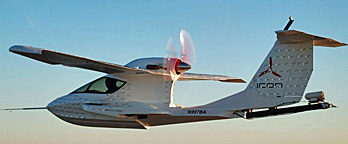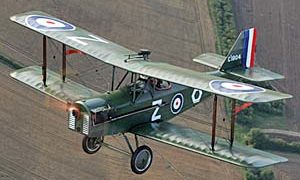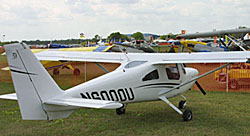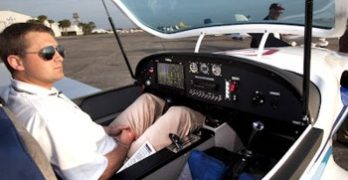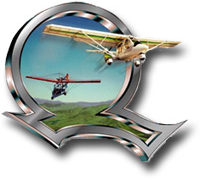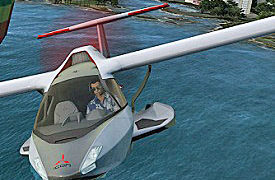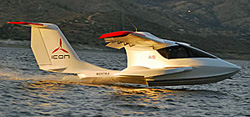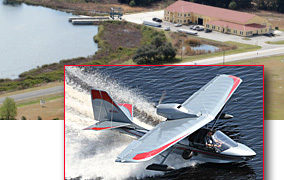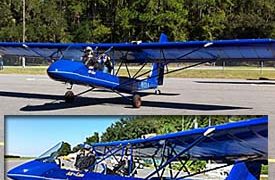On Memorial Day I had a chance to visit Icon Aircraft and spend some time with CEO Kirk Hawkins. We met seven years ago — just after the SP/LSA rule was released — near the beginning of his ambitions to create an entirely clean-sheet LSA amphibian.
*** Recently, Icon released the video appearing below to tout their spin resistant airframe (or SRA). Aviation and mainstream media jumped on this story and you may see other reports. I reported work toward this earlier and it’s been some time coming. Why the wait? From my first-hand experience with Cirrus Design and the development of their SR20, I have a bit of inside knowledge on this subject.
*** Cirrus also tried to grab the golden ring of SRA, as did their then-close competitor Columbia Aircraft (the two companies won their Part 23 Type Certificate within days of one another). Neither succeeded.
Search Results for : Icon
Not finding exactly what you expected? Try our advanced search option.
Select a manufacturer to go straight to all our content about that manufacturer.
Select an aircraft model to go straight to all our content about that model.
Cub Replicas Are Popular… SE5 Nostalgia, Anyone?
In this retro installment, Dave Unwin reviews an 85% WWI fighter. Dave will soon start reporting from the German Aero show. —DJ ||||
Watching the world drift by under a pair of sturdy, wire-braced wings is particularly special. Wind wails in the wires and the engine growls contentedly. Nearly one hundred years after the “Big War,” I flew a scale replica of one of the most famous fighters of that era: the iconic SE5a. *** Looking remarkably realistic from a distance, I drew nearer wondering if the similarities were only skin (fabric?) deep. Knowing the basic data of a full-scale SE, I was surprised when a quick calculation on the back of my kneeboard revealed my ship known as “Z” actually has a better power-to-weight ratio than a real SE5a! It also has a higher wing loading. *** Z is painted to resemble the personal aircraft of one of the war’s top-scoring aces, Major W.
LSA Highlights from Sun ‘n Fun 2012
Whew! It’s over. Man, Sun ‘n Fun can be the busiest six days of one’s life… well, at least until the next one. In this survey article, I want to skim the very top of what I found interesting at the recently concluded show. Each highlight will get fuller coverage. Before starting, though, I owe a couple shout-outs. *** A huge, enormous thanks to Jim Lawrence who kept you up on a daily basis. Accomplishing that means long days shooting photos, interviewing personalities, and working into the night in a motel room with a crappy Internet connection. It may look easy and fun but only half that assessment is true (hint: it ain’t easy). *** Secondly, another thanks-a-million to UltralightNews, my video collaborator. I have the easy job; they will put in an enormous number of hours to edit and finish more than two dozen new videos that I’ll post here as each is done.
Pushing the Envelope
Supersonic flight pioneer and WWII ace Chuck Yeager is famous for using, if not coining, the term “pushing the envelope,” which has entered the popular lexicon for just about anything to do with growth and meeting challenges. *** In that vein, since the day the Light Sport category became a fixture of the aviation regulatory landscape, there have been calls to do everything from abolish it outright to expand it’s current parameter. The parameters invoked to arrive at the perfect light aircraft involve the Usual Suspects: faster, bigger, stronger, heavier, better load, no altitude restrictions etcetera etcetera etcetera. *** In that vein, I want to share with you some cogent email comments received from Plane & Pilot magazine reader Dr. Barry Gloger who puts forward a well-reasoned argument for reworking the LSA concept. *** Whether you agree or not with his point of view, it’s hard to refute his logic, since it’s based on his expertise in the actual physical size of the “average American.” *** And now for The Usual Disclaimer: his viewpoint does not necessarily reflect my opinion or that of the staff of P&P mag.
Kodak Moment for Quicksilver Aeronautics
Among all aircraft producers in the world, a very limited number have exceeded the daunting barrier of delivering more than 10,000 airplanes. Those in this exclusive club include manufacturers of major aircraft such as Boeing, Cessna, Piper and precious few others. While Van’s Aircraft is approaching this number with their RV kit-built aircraft series (itself a rather incredible achievement), no recreational aircraft company has passed the 10,000 unit mark… except one: Quicksilver. *** For many pilots Quicksilver makes “ultralights.” Indeed they do, in that some models can be built to stay within FAA’s Part 103 rule. Quicksilver also makes two seaters in two model lines — the MX series and the GT series — and those are now considered Experimental Amateur-Built aircraft. Except for dealer-built Part 103 Quicksilver aircraft, er… “ultralight vehicles” to use the preferred FAA term, all the California company’s aircraft have been constructed from kits.
Post-Sebring Ketchup
After an arduous shooting/flying schedule at Sebring and several more days in country shooting and flying around Florida, I wung my way home to bang out some stories and pix for the mag. *** And now for the rest of the Sebring story: *** I made my way through the big exhibitor tent at show central and ran into Adam Valencic of Light Sport Group, who cued me in on their latest product. They’re the folks who market the cool wide-angle A/V-ator HD camcorder that mounts in the cockpit and also stores data for later GPS tracking on computer. *** The new unit is called Dr. Rotech. The palm-sized device is an engine electronics diagnostic tool for Rotax four-stroke engines which tests everything electrical: • Generator coil (on stator) • Charging coil (on stator) • Trigger coil (A&B) • Primary ignition coil (A&B) • Secondary ignition coil • Spark plug connector • Ignition switch • Engine ground *** Verifying or tracking down problems in electrical systems such as cracked wires, loose connections and failed components can take a lot of time.
Microsoft Embraces Light-Sport — New Flight!
Today, Microsoft announced the return of Flight Simulator, once one of the best-selling games on computers. Well, in truth, it’s no longer called Flight Simulator, rather simply “Flight.” *** In 2009 Microsoft abruptly dropped Flight Sim, leaving only the techy X-Plane for digital joystick jockeys. It’s way above my pay grade to understand while the Microsoft billionaires dropped a good seller but, who cares? It’s back with one Great Big Surprise: The iconic Icon A5 LSA seaplane is the default aircraft and shows even titanic Microsoft sees where the action is in aviation. The other two aircraft coming with Flight are an RV-6 and a Boeing Stearman, a significant change from the Cessna 172 or bizjet of Flight Sim. *** “Microsoft Flight drops the ‘Simulator’ label for what its developer unabashedly dubs a game — and a free one at that,” wrote Mark Hachman for PC Magazine online.
Beauty and the Bird — Do Esthetics Matter?
Even those who are not Apple fans agree the trend-setting California company’s focus on design beauty draws attention to their products. From their position near the back of the pack a dozen years ago, Apple has become the most valuable tech company in the world. Could this be due to their highly-refined sense of esthetics? More to the point of aviation enthusiasts, is artful design an ingredient in pleasing customers? *** I don’t know what all buyers are thinking but beauty has long enhanced the appeal of most consumer products. It seems the so-called niche aircraft producers have gotten this message perfectly well. Especially this is true for those products that have emerged since Light-Sport Aircraft burst upon the aviation scene. *** Creators of new LSA seaplane designs in particular seemed to have found the religion of design esthetics. Icon leads the pack with their stunning — and extremely well presented — A5.
Like LSA Seaplanes? You Have Beautiful Choices!
Life is good if you like LSA seaplanes. I’ll review five LSA seaplanes, either on the market or in development. *** Today SeaRey reins as far and away the most successful and proven design with some 600 flying. While SeaRey has been an Experimental Amateur Built (EAB) model, they’ve been working diligently on SLSA approval and will eventually sell SLSA, ELSA, and EAB versions. Priced around $70,000 as a kit, SeaRey is the most affordable seaplane. Owners are intensely loyal to the brand (Progressive Aerodyne) and the model. SeaRey is having a workshop right before Sebring. More about that shortly. *** SeaMax is the next most proven and accepted seaplane. Manufactured in Brazil, about 100 are flying including a handful in the USA. SeaMax America is the new importer for the handsome LSA seaplane from prolific designer (and nice guy) Miguel Rosario. From Great Neck, New York Richard Rofe said, “We have added many new features and have moved to a much larger production facility.
Doing What You Cannot Do in Most Aircraft
My good friend and Air-Cam developer, Phil Lockwood, likes to hold fly-outs for his customers. More than 160 kits have been delivered and built; each fly-out has attracted several of these owners. Phil and his Lockwood Aircraft associate George Weber have invited me several times but I’ve had to miss earlier gatherings for owners of this iconic “twin engined ultralight” (it isn’t really an ultralight but has its roots in that category). For once I got to attend. The destination was the beautiful Jekyll Island resort area of Georgia; it’s near St. Simons Island, another popular vacation destination. *** On a stunningly beautiful day, I was privileged to take my wife and two friends aloft for 30-minute tours of the Island. This was great fun for all. But what made it especially interesting is that I did this in N912LA, one of three Air-Cams badly trashed by the tornado at Sun ‘n Fun 2011 (photo).
- « Previous Page
- 1
- …
- 21
- 22
- 23
- 24
- 25
- …
- 28
- Next Page »


